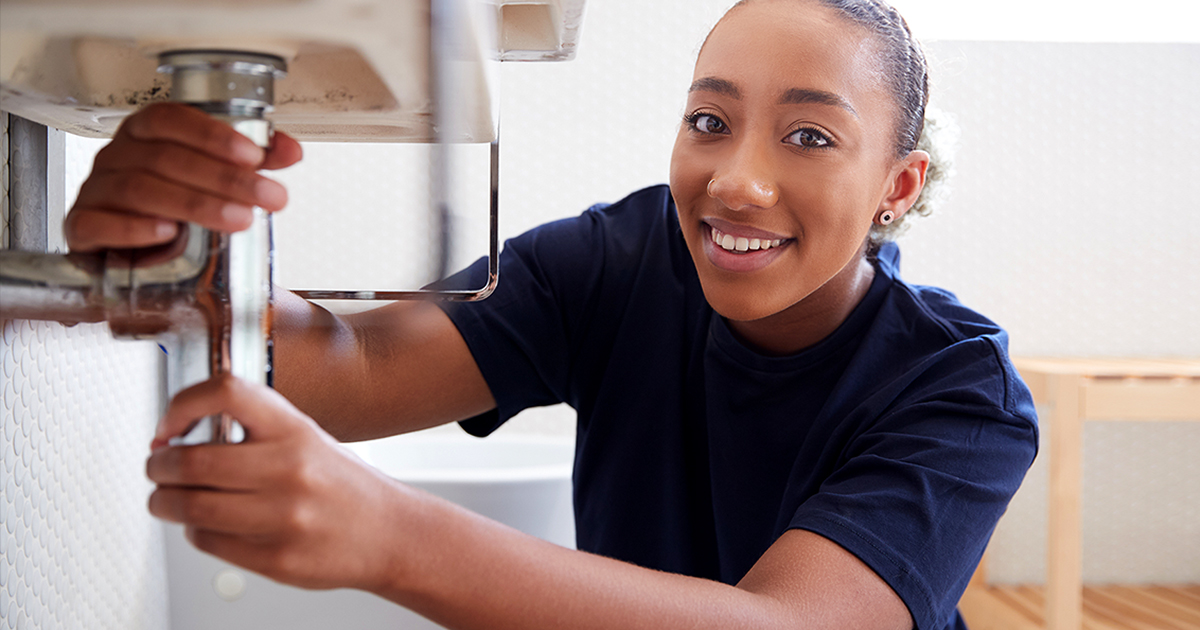
It’s best when plumbing just works perfectly in the background. But being a homeowner means you may have to give your pipes some attention every once in a while.
This quick list can help you cover all the basics so you can go back to, well, forgetting about the water works.
Change your filters already
Whether you have a whole house water filter, a unit attached to your kitchen faucet, or a built-in filtration system in your fridge, you should change the filter at least every six months. If not, the sediment and contaminants the filters trap could leach into your clean water, making it even dirtier than it was before.
It’s also a good idea to check filters in your dishwasher and dehumidifier on a regular basis. Consult your owner's manuals for specifics.
Clean faucet traps and showerheads
The little metal mesh piece at the bottom of your spouts is called a faucet trap, and it can get pretty icky over time. Even if it's not technically dirt, mineral buildup from hard water can cause blockages if left untreated.
Every few months, unscrew the end of your faucets and remove the trap. Rinse with plenty of water and replace.
If you’re cleaning a showerhead, unscrew it and soak it overnight in vinegar. The next day, use a small brush (we like used nail brushes or old toothbrushes) to remove the crud before screwing it all back together.
It's a good idea to keep homeowner tools such as an adjustable wrench or channel-lock pliers on hand to make the screwing and unscrewing more manageable. It's also smart to use plumber's tape (also known as thread sealant tape) when re-screwing shower heads to create a tighter seal.
Check sinks for leaks
It’s an unpleasant truth that pipes can expand and contract during winter months. This can cause cracks, loose joints, and other problems. If you have an older home or live in a cold climate, you could be at higher risk.
When temperatures start warming up, it’s a good idea to check under your kitchen and bathroom sinks for leaks. Water marks, soft spots, stains, or signs of bubbling can be a clue.
Clean slow drains and clogs
Even if you don’t have leaks, you could have a slow drain problem. This occurs when hair, lint, or oils build up inside the drains. The best way to detect this problem is to keep a close eye on drain speeds. If you don't see swirling or if bubbles appear, you have the beginnings of a clog.
If it’s a minor problem, you can buy inexpensive plastic snakes that sneak right down the drain—often without the need to remove drain plates or plugs. Simply insert the plastic tool as far as you can, and then remove it slowly. You’ll probably come up with a nasty surprise, so wear gloves and be prepared to wrap up the debris and throw it out right away.
For bigger problems, you may need to hire a plumber with a power snake or drain auger to help out. This can cost a pretty penny and be relatively inconvenient, but it’s a lot more convenient than dealing with a major leak or burst pipe would be.
Always avoid chemical clog removers
Over-the-counter products that claim to clean drains using lye can be pretty ineffective, but that’s not the worst part. They can also be toxic to your skin (or anything else they touch), meaning any splash back is dangerous. They can also corrode pipes and leave lots of debris behind.
Finally, they can contaminate water downstream and cause big problems for the environment. Every plumber we talked with recommends avoiding them like the plague.
Check drains you don’t use often
If you have drains or bathrooms you don’t use often, it’s a good idea to flush water through them about once a month. Try pouring a gallon of water down each seldom-used drain to keep things fresh. When you do, look for signs of trouble such as weird smells or slow draining. If you see anything off, take immediate steps to fix the problem.
Check your toilet bowls for leaks
It’s pretty easy to tell if your toilet is running (just listen for sounds of the tank refilling itself nonstop), but how do you know if you have a slower leak? Try adding a few drops of food coloring to the toilet tank. If you see that color in the toilet bowl within 30 minutes (and you haven't flushed), there might be trouble.
When to call a plumber
Home water systems are expensive and necessary, but they can come with serious risks if things go wrong. We recommend calling a pro if:
- You don’t know the cause of the problem
- You don’t know where to begin
- You uncover new problems while attempting to fix something else
- You don’t have the right tools for the job
A little indoor water maintenance on a regular schedule is the best way to keep your pipes in perfect working order.
Good luck, and stay clean and dry if you can!


